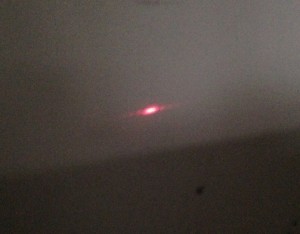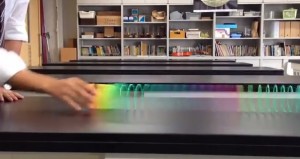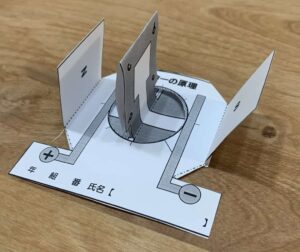The $20 Science Breakthrough: Prove Light is a Wave with a Paper Cup!
I’m Ken Kuwako, a Science Trainer. Every day is an experiment.
“Light travels in a straight line.” The sun’s light and a flashlight beam certainly look like they do, right? But what if you could easily see the “proof that light is a wave” using only items you have at home? Wouldn’t that be astonishing?
The mysterious phenomenon called light interference only occurs because light behaves as a wave. Do you think you need expensive lab equipment to witness this? Worries like, “Lasers are too costly, and creating fine slits (gaps) is too difficult…” are about to be solved!
Today, I’ll introduce an exciting experiment where you can visually confirm that light is a wave using just a paper cup and tools costing around 2,000 yen (approx. $15-$20). Although this is a simple, homemade version, it’s the perfect way to enjoy science with elementary school children or to give students a tangible sense of “What is a wave?” in the classroom.
How Do We Know It’s a “Wave”? The Science Behind the Experiment
The key to this experiment is the “single, fine gap” you create with a utility knife. Waves have a property called diffraction, where they spread out and bend around corners after passing through a narrow opening.
The “single cut” made in the paper cup actually works like two incredibly close slits (this is due to the thickness of the cutter blade and the microscopic roughness of the paper’s cross-section).
The light (waves) that are “diffracted” through these two effective slits then overlap on the wall. Where wave crests meet crests, they reinforce each other and create a bright area (a bright fringe); where crests meet troughs, they cancel each other out and create a dark area (a dark fringe).
This is the true nature of the interference fringes we will observe. If light were only “particles,” the image on the wall would just be the simple shape of the slit. The appearance of a striped pattern is the irrefutable evidence that light possesses wave properties.
The Home Science Recipe: Seeing the “Wave of Light”
【What You Need】
- Laser Pointer (A standard presentation pointer is fine. You can get a cheap one for around 2,000 yen.)
- Paper Cup
- Utility Knife (Cutter)
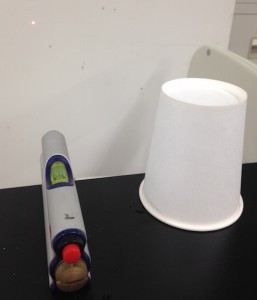
【Instructions】
- Use a utility knife to make a single, straight cut in the bottom of the paper cup. (This acts as your “slit.”)
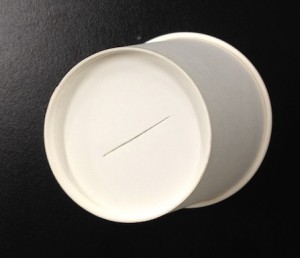
- Darken the room and shine the laser pointer from the inside of the paper cup toward the cut at the bottom.
- Observe the pattern of light projected onto the wall. (It’s easiest to see if the wall is about 50cm to 1m away from the paper cup.)
Alright, What Did You See?
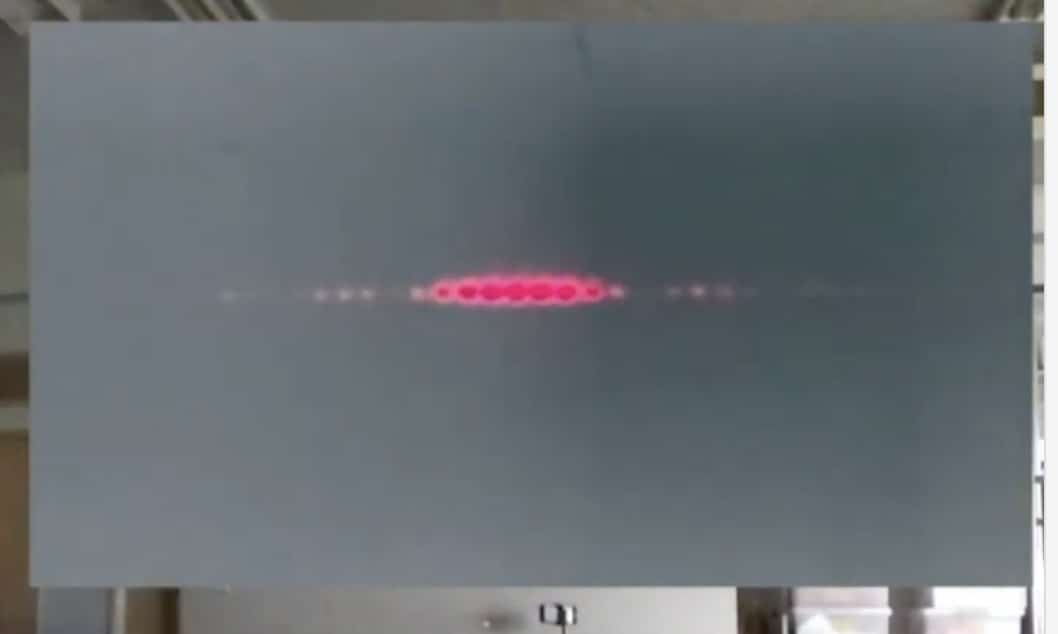
Instead of just the laser dot, you should see a blurry pattern on the wall that spreads out horizontally, featuring a “striped pattern” with alternating bright and dark areas (fringes). Congratulations! That is the undeniable proof that “light is a wave”: the interference fringes.
This phenomenon is essentially the same as the famous Young’s Double-Slit Experiment performed by the British scientist Thomas Young about 200 years ago. You have just recreated a piece of scientific history with a paper cup!
Try increasing the distance between the paper cup and the wall. What happened to the spacing between the stripes? You probably noticed the spacing widened, making them easier to observe. By measuring this “fringe spacing” and the “distance from the slit to the wall,” you can even calculate the wavelength (the length of a single wave) of light!
【!! THE MOST IMPORTANT SAFETY RULE !!】
Experiments are fun, but safety is key. The laser pointer’s light is very intense, so NEVER look directly into it or shine it into anyone’s eyes. Always observe only the light reflected onto the wall.
Summary: A Small Experiment, A Huge Discovery
In this article, we showed you how to observe light interference fringes using only a paper cup and a laser pointer.
We encourage you to experience this introduction to the mysterious world of physics—where “light is both a particle and a wave”—either at home or in the classroom.
For a classroom setting afterward, calculating the light’s wavelength from the fringe spacing using educational lasers and real slits would be a great next step.
It is also highly recommended to show this alongside sound interference (where playing the same sound from two speakers causes the volume to fluctuate depending on your location), as it deepens the understanding of properties common to all waves.
Inquiries and Requests
Bring the wonder and fun of science closer to you! We’ve compiled easy-to-understand tips and recipes for enjoyable science experiments you can do at home. Feel free to browse around! • The content of the Science Idea Notebook has been published as a book. Find out more here. • Information about the administrator, Ken Kuwako, is here. • For various requests (writing, lectures, experiment classes, TV supervision, appearances, etc.), click here. • Article updates are distributed on X!
![]() Experimental videos are streaming on the Science Idea Channel!
Experimental videos are streaming on the Science Idea Channel!

